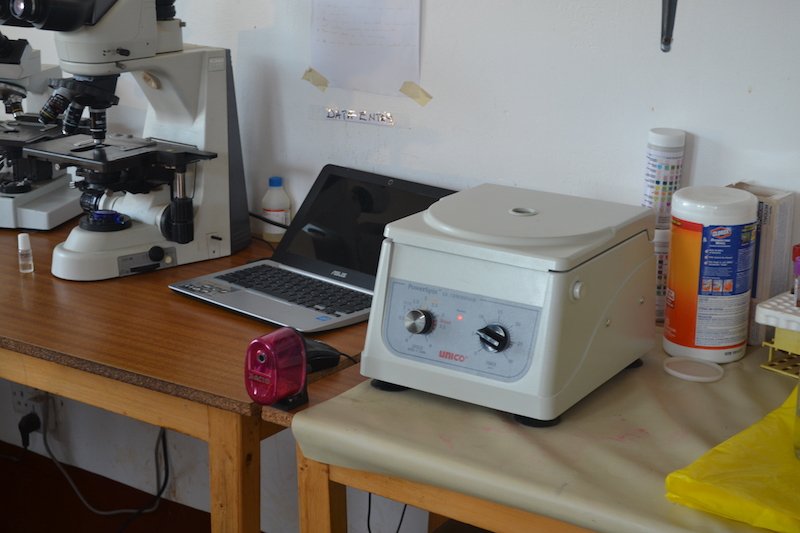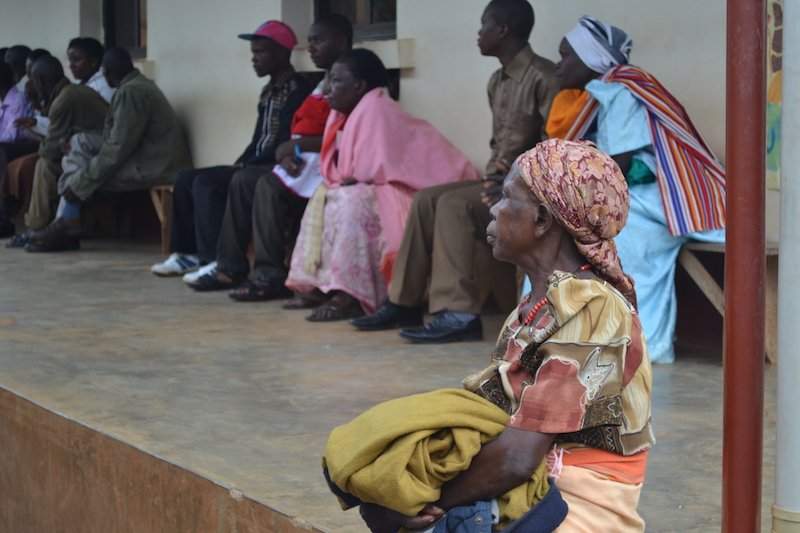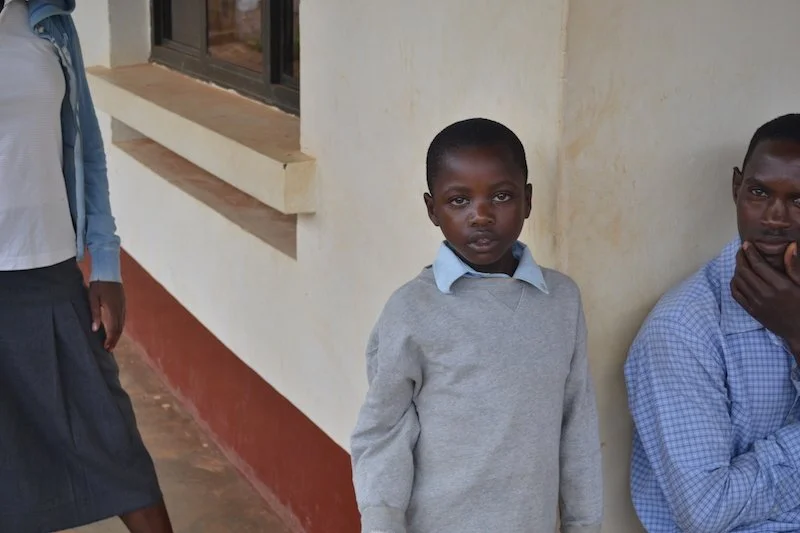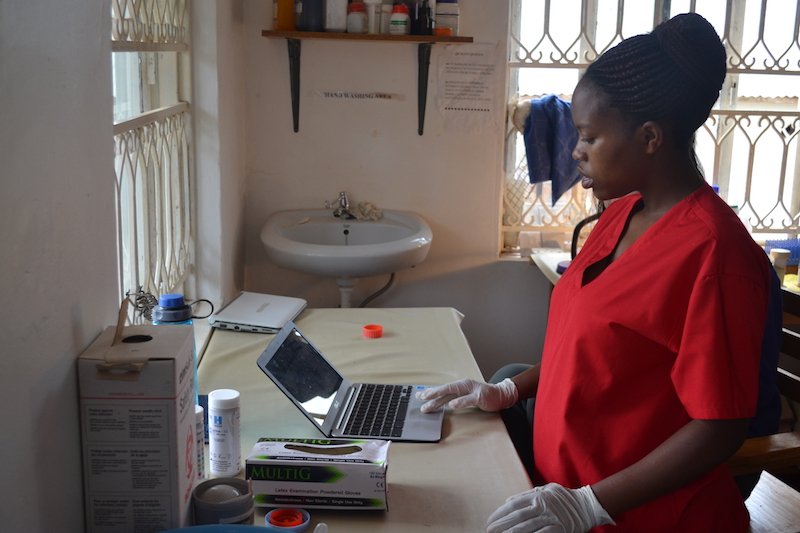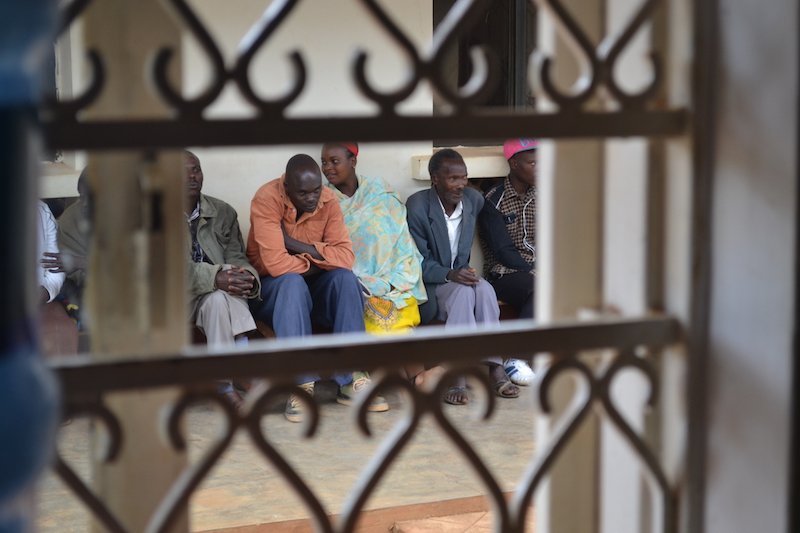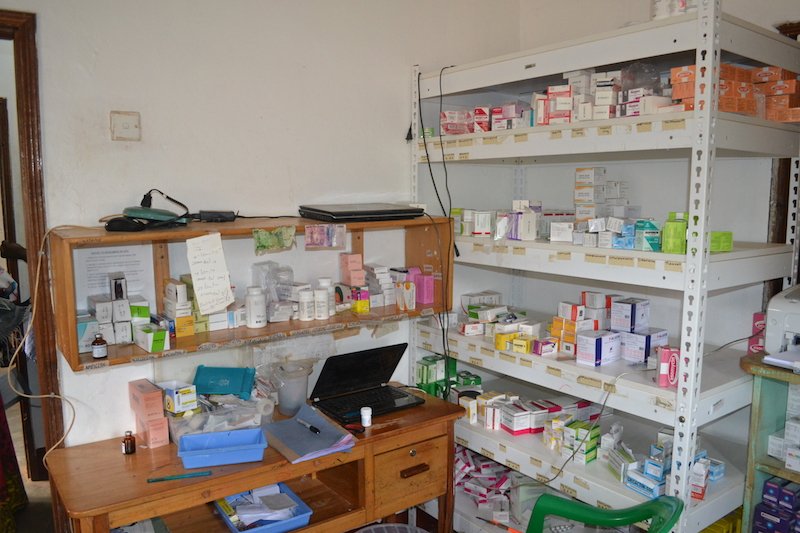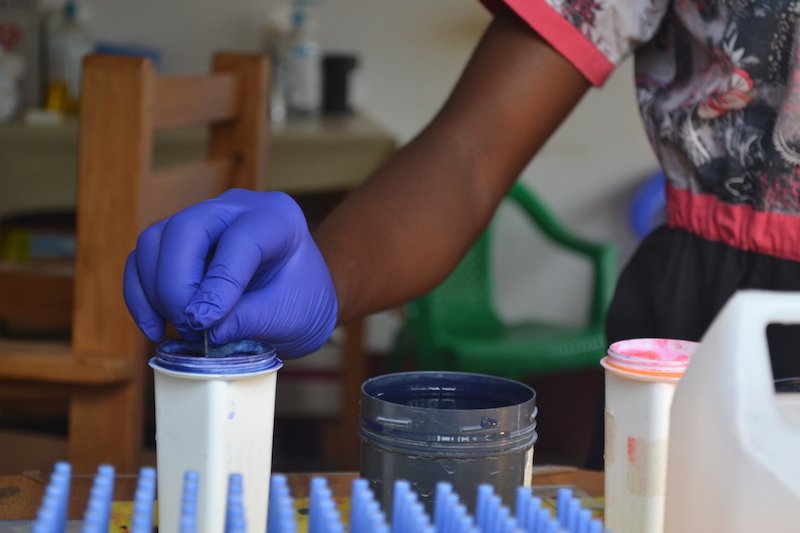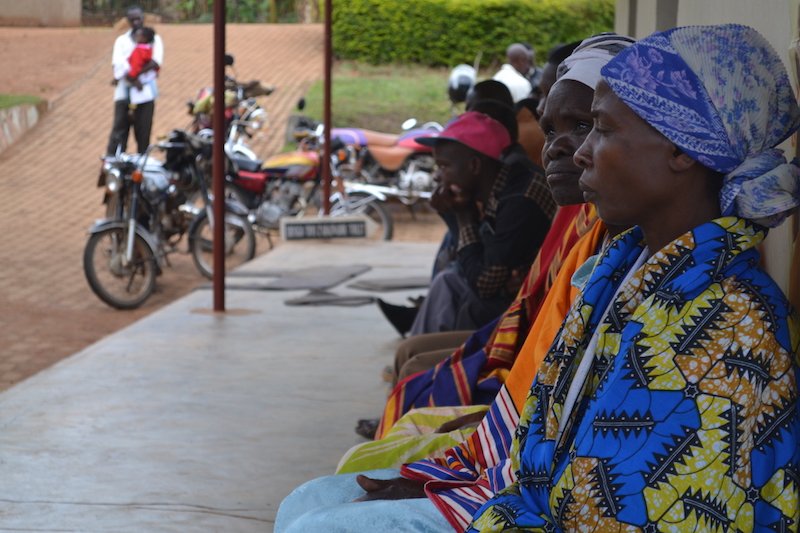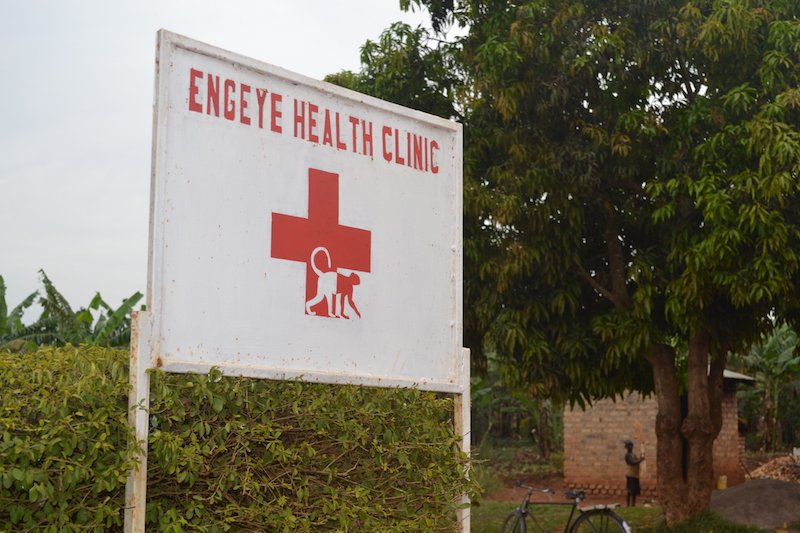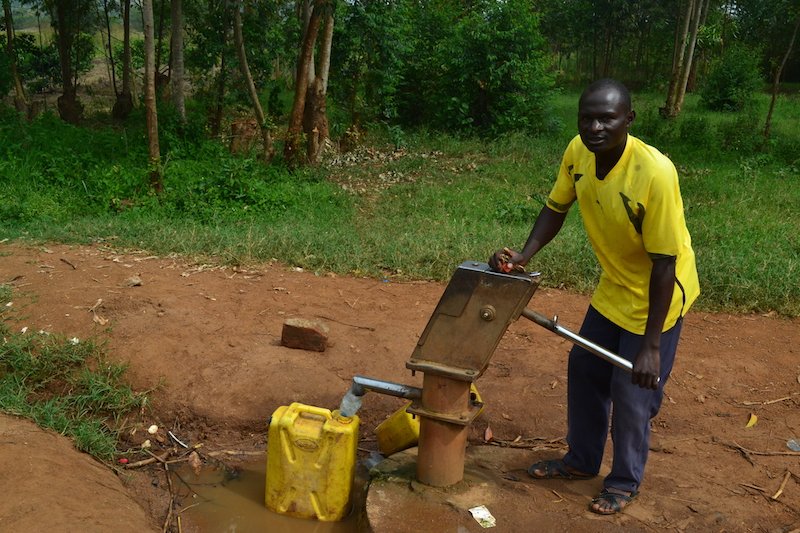Day 11: Engeye Photo Essay
A centrifuge is a five kilogram box which uses an electric motor to spins test tubes at high speed to separate out, by density, the contents of the tube. When testing blood, or feces centrifuges allow for test the detection of HIV, HPV, Malaria, Typhoid, and dozens of all too common diseases.
Then Engeye’s centrifuge broke. They resorted to spinning their samples with a plastic hand crank, occupying half an hour of valuable lab technician labor. When my science teacher visited the clinic in summer of 2015, she discovered the difficulty. She due to her experiences, she came to co-lead a trip to Uganda in which we were to spend four days at Engeye.
In early December, she presented me and my classmates a list of supplies, both medical and not, that the clinic requested. We began organizing a drive based service project within out school to help support the clinic. Engeye’s requests included rudimentary medical supplies like safety pin pricks, but also community aid like children’s clothes. And while I felt quite hopeful about the prospects of filling the clinic’s needs, at the bottom of the list lay the centrifuge. A device whose cost and importance seemed far in excess of my expectations for our project’s scope.
After three weeks of unfruitful investigation, an opportunity sprang from the most unlikely of places: Christmas Dinner. After convincing my extended family that I wasn’t going to die of Malaria on the impending travels, I brought up my search for medical supplies. Intrigued, my aunt replied, “Yours looking for a centrifuge? I think I can help with that.”
My aunt worked at a local hospital, so over the next seven weeks, we exchanged emails in hopes of arranging the donation of the centrifuge. In the last week of February, with all out logistics finalize, we made the exchange in my school’s parking lot. Using four kilograms of clothing we collected from the student body, I packed the centrifuge securely in large red duffle bag. Along with nine other bags, each filled with a mix of medical supplies for the clinic and clothing for the children of the impoverished community it serves, we flew across and an ocean and a continents, and toted them for a week across Rwanda until our late night arrival at Engeye.
The following day, I set up the centrifuge in the clinic lab. By 8:45 am, two urine samples had begun their circular journey. The placed the plastic hand crank on the shelf and continues with their other lab work, un-burdened by twenty five minutes of manual labor.
Despite all the ways by which Engeye strives for self-sufficiency, they depend of foreign aid for survival. In order to make care widely accessible as possible, they charge only a nominal fee of a few thousand shillings. Unfortunately this requires them to rely on donations. 75% of their operating budget comes from foreign contributions. And while a used centrifuge can be purchased off of Amazon for a few hundred dollars in the U.S., much cheaper than many of the clinic’s other investments, the ability to find and transport such a device in Uganda is exceedingly difficult. Engeye dutifully serves the community of Ddegeya, but it can only do so with support from the outside. And from what I’ve observed from my time at the clinic Engeye deserves every penny it can get.
Far before the clinic’s opening time of 8 a.m., patients gather on the benches outside of the clinic. Some travel hours to get to the clinic and others have serious ailments, yet many of them still manage to dress nicely for the visit to the clinic. Many of the patients are female, and before they walk down from the road to the clinic, many will straighten up their gomesi, which is a silk dress with pointed sleeves, before going to check in. In Uganda, people wear what makes them feel comfortable when they go to the clinic, and so because of the respect that they hold for this clinic and for John, they often wear the same attire that they might wear to church or similar events that require a dress code. Ugandan people really appreciate when healthcare is professional and kind, so Engeye is a much-loved clinic. One patient brought a rooster to his doctor because he was so thankful to receive the compassionate care that Engeye provided. In Uganda, roosters cost the same amount as a baby delivery. Another patient had a long-term illness, but after a few meetings with an Engeye doctor, the illness went away. She was so grateful that she drove from Kampala, which is a few hours away, to deliver a goat to her doctor. These gifts symbolize the respect that many Ugandans have for the type of care that Engeye offers them and why the clinic should continue to grow.
The clinic is staffed by numerous local Ugandans who are passionate about aiding their community. The staff are a capable group of individuals who provide quality health care. There are three clinicians who work together in order to assess, diagnose, and treat patients. The clinic is self-sufficient and does not rely on the presence of western doctors. Although the clinic encourages specialists to assist the clinic and consult on more complicated cases. The local clinicians are extremely talented and express a great deal of care when treating patients. Each clinician has a general practice degree and works with patients to carefully identify the problem.
Rusty, Engeye’s pharmacist, sits at her computer reading order, filling prescriptions, and giving necessary injections. She sits across from the patients and directly explains how often to take each medicine. She hands patients their medicines in small paper envelopes.
Henry, one of Engeye’s clinicians, stands at his laptop reviewing a patient’s file. He meets with each patient and asks questions to fully understand the issue. After meeting with a young girl, he turns to me and explains that she is anemic and likely has an infection that needs to be cured. Henry also explains that he is interested in going back to medical school in order to study to become a surgeon.
In my time observing the clinicians work, I have seen a great deal of care that everyone has for their patients and collaborating between clinicians. The local people have the talent and care necessary to support this community with high quality health care.
The lines grow long. There are often too many people for each to get a seat on the small wooden benches lining the outside of the clinic. Squeezed tight amongst other ill members of the Ddegeya community, they wait hours for the lab to assess their samples and then hours for a doctor to diagnosis their problem. Then comes another wait for the prescription to be filled.
This issue facing the clinic has nothing to do with the experience of the staff or the structure of the clinic itself. Rather the opposite. Over the past (blank) years, Engeye’s reach to the community has expanded at an exponential rate, now serving the populations from (blank). A government funded clinic lies only a few hundred meters down the road, but it is largely deserted. Open only a few hours a day on irregular intervals, the government clinic failed to do exactly what Engeye is now accomplishing. Meeting the needs and requirements of the Ugandan people. Through the clinic’s operations it has been able to serve the needs of over (blank) people, and with the local hospital in Musaka over twenty miles away, people from farther and farther are streaming into Engeye each day. The patients, sick or injured, arrive at the clinic in the morning hours looking tired and depressed, however leaving with an emerging smile. From following and observing the staff handling patients, the compassion and genuine commitment to improving the lives in Ddegeya is evident. That may appear cliché, and perhaps it is, but it should not take away from its meaning. Each day John runs around the clinic engaging in conversations with grandmothers or playing games with the babies waiting on their check-up. In a region of the world associated with the norm of Afro-pessimism Engeye has exhibited the ability of the locals and the West to work together, side by side, to establish something life changing. Each patient holds a story. A story of their family, their community, and their own lives and Engeye makes that possible for many whose story seemed inevitable to collapse.
At this point Engeye has accomplished more than it could ever have imagined, yet it remains imperative that it keeps expanding, keeps altering the lives of everyone around it. With the plan for a new maternity clinic in motion and a constant desire to upgrade equipment for efficiency, the clinic requires funding. Living in America it often appears impossible to make a difference, so instead we reside to discussing the growing problems rather than fixing them. Engeye is a proven model of the West’s impact on Uganda, and while it may be difficult for any individual to make an enormous contribution, together the West can forever transform the lives of the people in Ddegeya.
The pharmacy is the physical manifestation of ‘hurry up and wait’. A patient will walk in with money and a scrap of paper on which their prescription is written. The pharmacist will double-check the prescription and tell whoever is helping them to write two numbers separated by an ‘x’, indicating how many should be taken per day, e.g. 1x3. After the prescriptions are filled, the patient will give the pharmacist the money that is due. Many drugs are in the pharmacy, but most of the popular ones seem to be drugs to counteract pain and malaria. The staff act with a professional attitude that would not be amiss if one was to venture to John-Hopkins. The orders are filled promptly, with little fuss, and the recipients always leave with a kind word from the pharmacist. The pharmacy also deals with injections, making the service a comprehensive one.
If the lab at Engeye Health Clinic looks like an art studio, it isn’t just because the lab technicians have learned to use the same containers until they look like paint cans—Engeye’s lab workers treat every step of their work with the same care a painter might each stroke. Stepping into the lab, a station for sanitary blood draws resides on your right, and on your left a clinician or lab tech is hard at work testing up to forty blood samples a day for malaria and other illnesses. Another station allows for urine sampling, a simple test that can point to indicators for several diseases. After sampling, lab techs input data and notes into an online database, which connects the lab to primary clinicians and the pharmacy.
The versatility of Engeye’s lab cannot be overstated; Engeye’s new centrifuge only adds to a wide array of capabilities that the lab technicians have. Using cheap materials and learning to make things last, the lab consistently and frugally pinpoints deficiencies that no clinician would ever be able to determine from look alone. They provide an integral service, eliminating much of the obtuseness of diagnosis: yet another testament to the high quality of Engeye’s services, the lab technicians work with care and humanity as they endeavor to save hundreds of lives each year.
The Engeye Clinic’s high quality care is unique within community of Ddegeya, Uganda, and thus people travel from up to two hours by public transportation just to access the medical aid that the clinic provides. The clinic is one of a kind in that it aids ailments where other clinics fall short, making it an integral part of the Ddegeya community. The clinic not only treats injury and physical illness, but also mental illness, a field of illness that is not prioritized at the majority of Ugandan health facilities. “The care that the clinic provides in incomparable,” says Henry, a resident clinician. This Ugandan community is comprised of bright, kind, and welcoming people who have the ability to thrive with the healthcare that Engeye provides. This community deserves the prosperity that builds on a foundation of strong healthcare, and these community members deserve the Engeye Clinic.
One lemon-colored jerican holds anywhere from 1.5L to 7L. The largest portable water container I’ve seen here is four gallons. Kids from Ddegeya village walk around 1.5 miles to come to the borehole Engeye created about 100 yards away from the clinic. These two things combined mean that Ddegeya villagers have to think about water a lot more than Americans do. The pump is known by locals to be the reliable one with relatively clean water in the area. Even then, it’s not clean enough to drink. The water can contain a variety of dangerous pathogens. As for its reliability, the clinic has a donor who specifies that their money go to keeping the pump working. If it malfunctions, Engeye Clinic Director John Kalule is notified and flies into action to fix it. In this way, Engeye feels like a lot more than a medical clinic. It serves its community in a lot of ways, and the borehole feels symbolic of this. You can learn a lot about village life from an evening at the borehole. About 75 kids come each day, anywhere from 2 to 5 times per day. Boys ride bikes to the hole with anywhere from one to four jericans strapped to the back, returning by pushing the weighed-down bike. Girls, who aren’t allowed to ride the bikes, carry the jericans by hand or on their head. In the evening, locals gather around the water source to converse and laugh. While this system for collecting water seems complicated to me as an American, the more time I’ve spent around the borehole and in the community, the more I understand how this system works for the people who are using it. The villagers and clinic staff recognize areas for improvement, like better sanitation for the water and a separate water source for a nearby school. For now, it’s serving its purpose as a reliable water source for cooking, washing, and drinking (once boiled). Perhaps equally importantly, it serves as a practical gathering place for the community.
